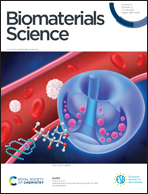An overview of latest advances in exploring bioactive peptide hydrogels for neural tissue engineering
Abstract
Neural tissue engineering holds great potential in addressing current challenges faced by medical therapies employed for the functional recovery of the brain. In this context, self-assembling peptides have gained considerable interest owing to their diverse physicochemical properties, which enable them to closely mimic the biophysical characteristics of the native ECM. Additionally, in contrast to synthetic polymers, which lack inherent biological signaling, peptide-based nanomaterials could be easily designed to present essential biological cues to the cells to promote cellular adhesion. Moreover, injectability of these biomaterials further widens their scope in biomedicine. In this context, hydrogels obtained from short bioactive peptide sequences are of particular interest owing to their facile synthesis and highly tunable properties. In spite of their well-known advantages, the exploration of short peptides for neural tissue engineering is still in its infancy and thus detailed discussion is required to evoke interest in this direction. This review provides a general overview of various bioactive hydrogels derived from short peptide sequences explored for neural tissue engineering. The review also discusses the current challenges in translating the benefits of these hydrogels to clinical practices and presents future perspectives regarding the utilization of these hydrogels for advanced biomedical applications.



 Please wait while we load your content...
Please wait while we load your content...